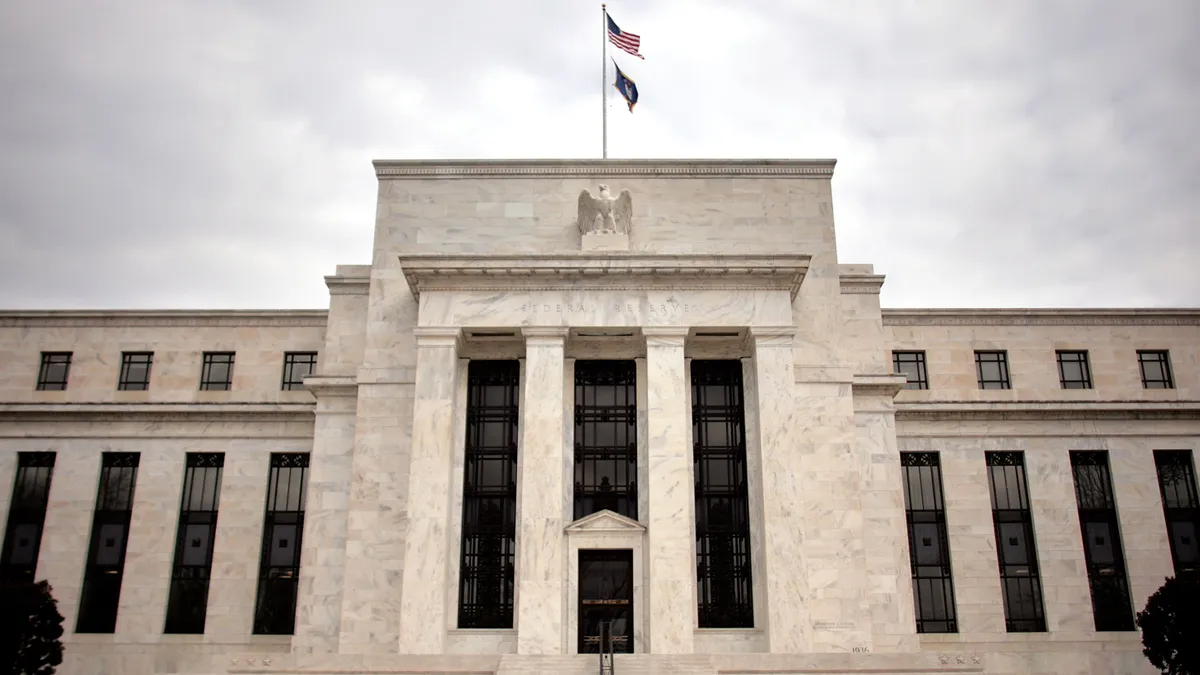Dive Brief:
- The Federal Reserve may slow economic growth to 1% or less during the next two years as it makes good on a commitment to quell inflation from a four-decade high through aggressive cuts in stimulus, Moody’s Analytics said on the eve of a meeting of policymakers.
- “To cool inflation, the Fed will likely need GDP [gross domestic product] growth closer to 1%, if not lower, in each of the next two years,” Ryan Sweet, senior director of economic research at Moody’s, said in a research report. “A number of indexes that we track have shown that financial conditions have tightened, but the Fed is going to need more if growth is to slow enough to tame inflation.”
- First-quarter GDP growth slumped to a 1.4% annualized rate from 6.9% in the fourth quarter primarily because of inventory reductions, a waning of fiscal stimulus aimed at offsetting harm from the pandemic and a rise in imports as congestion at U.S. ports began to ease.
Dive Insight:
CFOs for several months have faced an array of external challenges that have forced adjustments to risk management and their plans for prices, wages, capital allocation and other components to profits.
The U.S. business landscape has repeatedly shifted amid surging inflation, rising borrowing costs, constricted supply chains, high wage wage pressures, a tight labor market and the threat of a new, disruptive coronavirus variant — to name just some of the challenges to CFO planning.
The description by Moody’s of the threat to the expansion from Fed tightening suggests that CFOs may need to update their roster of risks with “stagflation,” or low growth and high inflation.
The consumer price index increased 8.5% year-over-year in March while the Fed’s preferred measure of inflation — the core personal consumption expenditures price index — rose 5.2%, according to the Labor Department.
Also, the employment cost index during the first quarter gained 1.4% for a 4.5% year-over year increase. The persistent rise in compensation costs bolsters concerns that consumer expectations for low long-term inflation will fade, prompting demands for higher pay and triggering a self-reinforcing upward spiral in prices and wages.
Fitch Ratings warned of stagflation and increasing credit risks, “with the Russia/Ukraine war upending the macroeconomic outlook."
“The outlook for monetary tightening has increased notably, as has the potential for stagflation,” Fitch said.
Fed Chair Jerome Powell and other policymakers have expressed confidence economic growth will remain steady. They have signaled that, at the end of a two-day meeting Wednesday, they plan to announce a half-point increase in the federal funds rate and a plan to begin trimming the central bank’s $9 trillion balance sheet.
At the March meeting of the Federal Open Market Committee, “many on the committee thought it would be appropriate for there to be one or more 50-basis-point hikes” in the main interest rate, Powell said on April 21.
“We really are committed to using our tools to get 2% inflation back,” he said, referring to the Fed’s preferred rate for price gains over the long term.
In anticipation of a policy tightening, the interest rate on the 10-year Treasury note — a benchmark for borrowing costs — breached 3% Monday for the first time since 2018, or double the yield at the end of last year.
News about inflation has not been exclusively bad. For example, increases in worker compensation have gradually eased, according to Ian Shepherdson, chief economist at Pantheon Macroeconomics.
“It’s fair to argue, we think, that the ending of enhanced/extended unemployment benefits, the reopening of schools and childcare facilities and the fading of COVID fear — thanks to the vaccination and the less-severe omicron variant — have slowed the pace of wage gains from last summer’s peak,” Shepherdson said.
“On a quarter-to-quarter basis it’s now a decent bet that wage gains have stabilized,” he said. “But they continue to rise at too rapid a pace for the Fed,” bolstering the odds that policy makers will announce a second straight half-point increase in the main interest rate after a two-day meeting ending on June 15.












